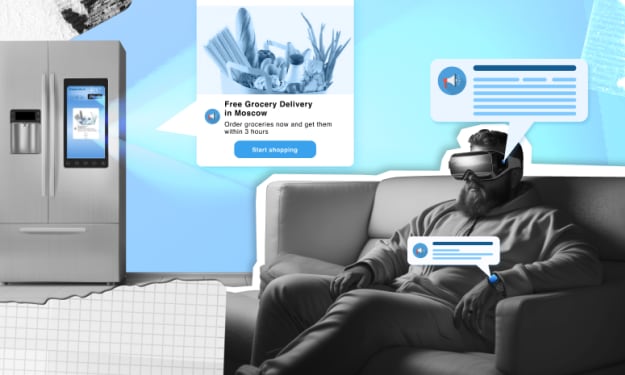Backend Development Trends to Watch in 2023
the field of backend development is set to witness some fascinating trends that will revolutionize the digital landscape.

Introduction
In the dynamic world of technology, backend development plays a crucial role in shaping the digital landscape. As businesses strive to deliver seamless and efficient user experiences, staying updated with the latest backend development trends is essential. This blog explores the emerging trends in backend development for 2023. Whether you are a backend development company or a business seeking backend development services, understanding these trends will help you stay ahead in the competitive market. Let's dive into the exciting developments that await us in the realm of backend development.
Cloud-native Architecture
Cloud-native architecture refers to designing and developing applications specifically for the cloud environment, taking advantage of its scalability, reliability, and cost-effectiveness. It allows businesses to build and deploy optimized applications for cloud platforms and fully leverage the benefits they offer.
- Definition and significance of cloud-native architecture:
- Cloud-native architecture involves developing applications using cloud services and technologies from the ground up rather than simply migrating existing applications to the cloud.
- It focuses on creating modular, loosely coupled components that can be independently scaled, deployed, and managed.
- Cloud-native architecture enables organizations to be more agile, scalable, and resilient in their application development and deployment processes.
- Benefits of cloud-native architecture:
- Scalability: Applications built using cloud-native architecture can easily scale up or down based on demand, ensuring optimal performance and resource utilization.
- Reliability: The architecture leverages automatic scaling, load balancing, and fault tolerance to enhance application reliability and minimize downtime.
- Cost-effectiveness: By leveraging cloud resources efficiently, organizations can reduce infrastructure costs, pay only for what they use, and achieve better cost optimization.
- Popular cloud-native technologies:
- Kubernetes: A container orchestration platform that simplifies the deployment, scaling, and management of containerized applications across clusters of machines.
- Docker: A containerization platform that allows developers to package applications and their dependencies into lightweight, portable containers.
- Role of serverless computing:
- Serverless computing is a cloud computing execution model where the cloud provider dynamically manages the allocation and scaling of resources based on application demand.
- It enables developers to focus on writing code without worrying about server management or capacity planning.
- Serverless architectures can be integral to cloud-native applications, providing event-driven, scalable, and cost-efficient execution environments.
As a backend development company, utilizing cloud-native architecture, technologies like Kubernetes and Docker, and exploring serverless computing can empower businesses to build highly scalable, reliable, and cost-effective applications in the cloud environment.
Microservices and API-first Development
Introduction to Microservices and Their Advantages:
- Microservices architecture is an approach to software development where applications are built as a collection of small, loosely coupled services.
- Each microservice focuses on a specific business capability and can be developed, deployed, and scaled independently.
- The advantages of microservices include increased scalability, agility, and fault isolation.
Shift Towards API-First Development:
- API-first development is a methodology that emphasizes designing and building APIs before implementing the rest of the application.
- It prioritizes creating robust and well-documented APIs that different clients and services can easily consume.
- This approach enables better team collaboration, promotes reusability, and simplifies integration with third-party systems.
Tools and Frameworks: Spring Boot, Node.js:
- Spring Boot is a popular Java framework that simplifies the development of microservices.
- It provides an opinionated approach, auto-configuration, and a wide range of libraries for building robust and scalable microservices.
- Node.js is a JavaScript runtime that allows developers to build lightweight and efficient microservices.
- Its non-blocking I/O model and event-driven architecture are well-suited for building scalable, high-performance APIs.
Importance of Designing Robust APIs and API Management Platforms:
- Designing robust APIs ensures they are intuitive, well-documented, and meet the clients' needs.
- API management platforms provide features like authentication, rate limiting, analytics, and monitoring, which help secure and manage APIs effectively.
Examples of Companies Adopting Microservices and API-First Approaches:
- Netflix: Netflix uses microservices to handle its vast catalog of movies and TV shows, allowing for continuous deployment and rapid innovation.
- Uber: Uber's backend infrastructure is built on microservices, enabling seamless coordination between various components of their ride-hailing platform.
- Amazon: Amazon's retail platform is powered by microservices, which enables them to scale their services and handle millions of transactions.
By adopting microservices and an API-first approach, backend development companies can build scalable, modular, and flexible applications that can easily adapt to changing business requirements.
Event-driven Architecture and Asynchronous Communication
Event-driven architecture is a software design pattern where systems communicate and respond to events within the system or in the external environment. It allows for loosely coupled components that can react to events asynchronously. Here's a breakdown of this topic:
Definition and Benefits of Event-Driven Architecture:
- Event-driven architecture (EDA) is a software design pattern that focuses on the production, detection, and consumption of events.
- In EDA, events represent significant occurrences or changes in the system or external environment.
- Benefits of event-driven architecture include:
- Scalability: EDA enables systems to handle large workloads by distributing tasks across multiple components.
- Flexibility: Components in EDA can be added, modified, or removed without disrupting the entire system.
- Responsiveness: EDA allows systems to react in real time to events, providing faster and more timely responses.
Role of Message Brokers and Event Streaming Platforms:
- Message brokers and event streaming platforms play a crucial role in event-driven architecture.
- They facilitate the reliable and efficient exchange of events between different components.
- Message brokers, such as Apache Kafka and RabbitMQ, act as intermediaries, receiving, storing, and forwarding events.
- Event streaming platforms, like Apache Kafka, provide a distributed, fault-tolerant, and scalable infrastructure for handling event-driven systems.
Popular Event-Driven Frameworks: Apache Kafka, RabbitMQ
- Apache Kafka is a distributed streaming platform that can handle high volumes of real-time data. It provides fault tolerance, scalability, and durability.
- RabbitMQ is a robust message broker implementing the Advanced Message Queuing Protocol (AMQP). It supports multiple messaging patterns and provides reliable message delivery.
Use Cases for Event-Driven Architecture:
- Event-driven architecture is well-suited for various scenarios, including:
- Real-time data processing and analytics
- Internet of Things (IoT) applications
- Microservices-based architectures
- Decoupling of system components
Examples of Companies Implementing Event-Driven Architectures:
- Netflix: Netflix uses event-driven architecture for its streaming platform to handle millions of user events and provide personalized recommendations.
- Uber: Uber employs event-driven architecture to manage real-time ride requests, driver availability, and dispatching.
- Airbnb utilizes event-driven architecture to handle booking requests, manage availability, and send notifications to hosts and guests.
Event-driven architecture and asynchronous communication are valuable concepts in backend development. By leveraging event-driven patterns and technologies like Apache Kafka and RabbitMQ, companies can build scalable, flexible, and responsive systems to meet the demands of modern applications.
Security and Privacy in Backend Development
Backend development plays a crucial role in ensuring the security and privacy of data in various software applications. As safeguarding sensitive information grows, backend development companies and services must prioritize security measures. This section will explore the key aspects of security and privacy in backend development, including common threats, best practices, compliance, and emerging trends.
Growing Importance of Security and Privacy:
- With the increasing amount of data being processed and stored, the need for robust security and privacy measures has become paramount.
- Protecting user information, financial data, and intellectual property is crucial for maintaining trust and avoiding potential breaches.
Common Security Threats and Vulnerabilities:
- Backend development faces various threats, including injection attacks, cross-site scripting (XSS), cross-site request forgery (CSRF), and insecure direct object references (IDOR).
- Attackers can also exploit software frameworks, libraries, or outdated component vulnerabilities.
Techniques and Best Practices for Securing Backend APIs and Data Storage:
- Implementing secure authentication and authorization mechanisms to control access to APIs and sensitive data.
- Employing encryption techniques, such as Transport Layer Security (TLS), to protect data during transmission.
- Regularly updating and patching software components to address known vulnerabilities.
- Implementing secure coding practices, including input validation, output encoding, and parameterized queries, to prevent common attacks.
Compliance with Data Protection Regulations:
- Backend development companies must adhere to data protection regulations like the General Data Protection Regulation (GDPR) and the California Consumer Privacy Act (CCPA).
- Ensuring user consent for data collection, implementing appropriate data storage and retention policies, and providing users with control over their data is essential.
Emerging Trends:
- Zero-trust architecture: Adopting the principle of "never trust, always verify" to enhance security by continuously verifying user identities and authorizations.
- Secure coding practices: Integrating security into the software development lifecycle through code reviews, security testing, and developer training.
In conclusion, security and privacy are critical considerations in backend development. By implementing best practices, adhering to regulations, and staying informed about emerging trends, backend development companies and services can effectively protect sensitive data and maintain the trust of their users.
Conclusion
As we look forward to 2023, the field of backend development is set to witness some fascinating trends that will revolutionize the digital landscape. Backend developers have many exciting opportunities, from adopting serverless architecture and microservices to the growing importance of cybersecurity and the rise of low-code development. By embracing these trends, backend development companies can offer cutting-edge solutions to businesses, ensuring enhanced performance, scalability, and security. Stay informed, adapt to change, and harness the power of these trends to drive your backend development services toward success in the coming year.
About the Creator
Mukesh Ram
I founded Acquaint Softtech Private Limited with a vision to make quality developers affordable to everyone. With my blood, sweat, and tears I haven’t just been able to sustain but thrive over the years.






Comments
Mukesh Ram is not accepting comments at the moment
Want to show your support? Send them a one-off tip.